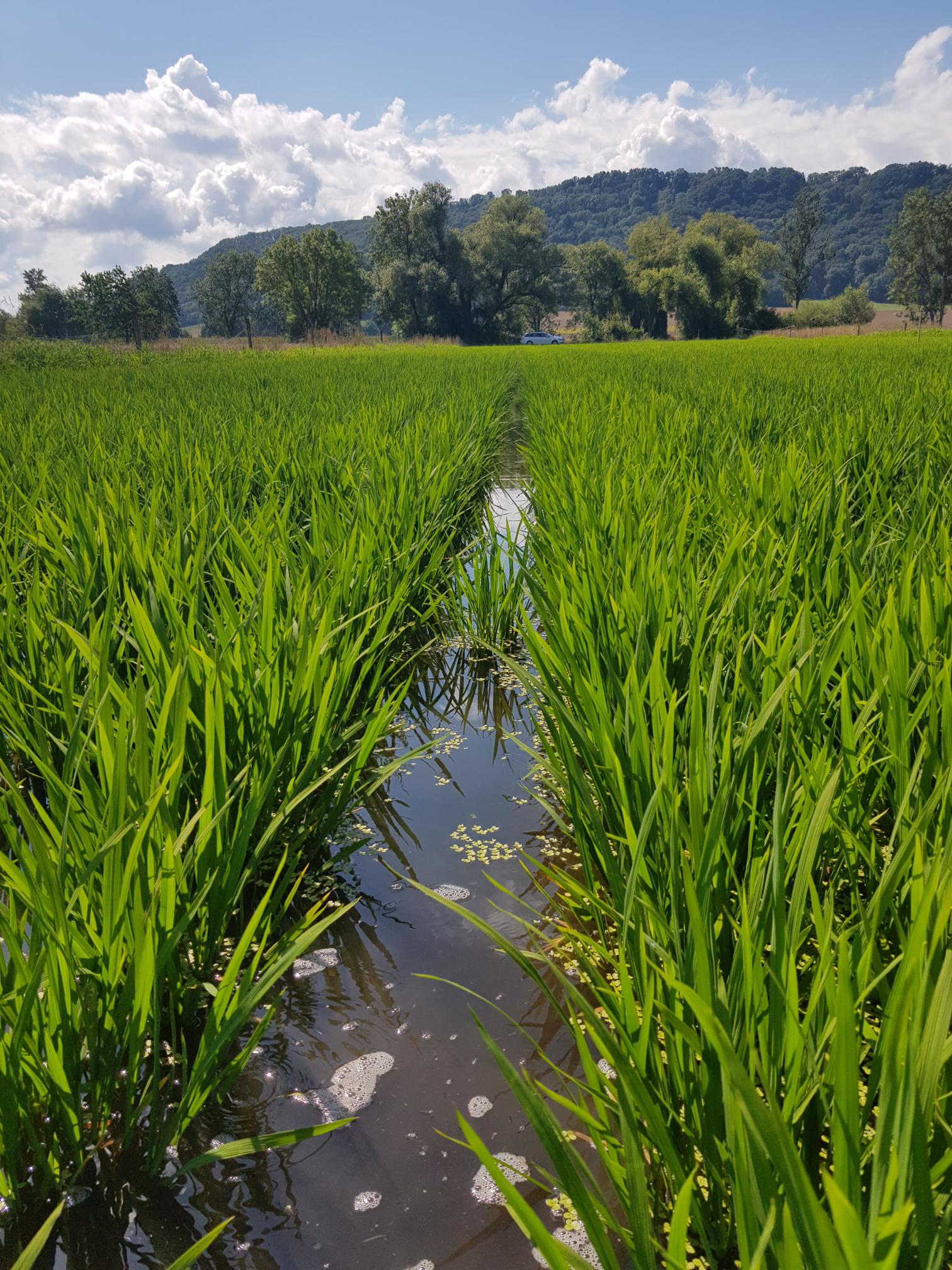Paddy Rice Cultivation in Switzerland
Since 2017, paddy rice has been cultivated in Switzerland. The goal of the project is to promote wetland-dependent and often endangered species. Over the course of the next few years, the environmental aspects (greenhouse gas emissions, soil, and water use) will be studied in a collaboration between ETH Zurich and Agroscope.
During the last century, peatlands (organic soils) were often drained for agricultural purposes, resulting in soil subsidence and high CO2-emissions. These high CO2-emissions can only be substantially reduced if the organic soils are reflooded. Paddy rice cultivation on organic soils offers farmers the opportunity to continue cultivating their fields while ensuring lower CO2-emissions. However, the anaerobic conditions in flooded rice soils result in high methane emissions. Can the methane emission be compensated by the prevented CO2-emissions? To answer this question, an annual greenhouse gas budget will be measured in a mesocosm experiment at Agroscope in 2023 and 2024.
By flooding, the soil system undergoes strong changes in redox potential and soil chemistry. Wet-tillage (puddling) destroys the pore structure and leads to reduced water infiltration. The changes in chemical and physical soil properties will be monitored in two very different soil types from 2023 to 2025. A previously already water influenced Gleysol will be compared to a Cambisol under paddy rice cultivation.
Rice has a high water demand, especially if cultivated under flooded conditions. The water use for all the fields in Switzerland will be modeled and compared. Additionally, water samples will be taken regularly to study the quality of the water in the rice fields.
More information: external page www.nassreis.agroscope.ch

